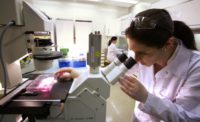Whether you’re in the business of manufacturing cheese, milk products, milk powders, cultured products, ice cream or anything else in the dairy world, your final products must be wholesome and pathogen-free. And an environmental monitoring program (EMP) is one of the most important tools to keep pathogens out of the product stream. A well-designed, robust EMP will protect your brand and save millions in costly recalls.
The purpose of an EMP is to find and eliminate the source(s) of contamination with a “seek-and-destroy” mission to determine areas with special maintenance requirements (formation of growth niches). It can be used to evaluate the hygienic design of the facility, tools and equipment, as well as assess the overall plant sanitation and hygiene programs, including management of critical control points. Finally, it will establish acceptable baseline data and microbiological criteria for each sample site.
Be thorough
Often, we see EMP programs that have been developed just to have a checkmark for an audit. They do not have a comprehensive hazard assessment by qualified individuals, internally or externally. This does not do enough to protect the brand, nor the consumer.
Furthermore, FDA is increasing oversight by conducting “swabathons” in the facility to demonstrate a safe environment.
Identifying the appropriate target pathogen for your process is one of the first steps in setting up your EMP. Typically, wet, cold processing environments such as ice cream plants select for Listeria spp.; warmer processing environments such as milk spray-drying operations select for Salmonella. However, most food manufacturing environments can have a blend of both warm and cold areas. Therefore, appropriate targeted pathogens must be considered — this is where your hazard assessment comes in.
The key components of a comprehensive EMP include the formation of a cross-functional environmental monitoring team, a hazard assessment, pathogen targets, site selection, frequency of swabbing, corrective actions and root cause analysis.
During your risk assessment, consider all process flows. For example, do your transportation vehicles pose any hazards? Should there be an added verification in the sanitation process, through swabbing, in your EMP?
Root cause analysis
Let’s dive into the root cause analysis further, as it is your mitigation step to protect your product and processing environment. The goal is to determine if the pathogen swabs are from a growth niche or if they are transients. This determination helps to select the best strategy to eliminate or mitigate the occurrence. Some key considerations in performing a root cause analysis:
- The root cause analysis is a comprehensive review of all systems to determine which of the many avenues in the environment may have been contaminated.
- The hazard assessment is to be conducted by a cross-functional team and may be expanded from the original environmental monitoring team to gain multiple perspectives.
- Checklists can be used to help with the “seek-and-destroy mission” to determine the root cause. The box provides examples of possible root causes for consideration, where appropriate, which can be used in a checklist approach.
Possible root causes
- Personnel changes
- Employee intervention
- GMP violations
- Repeat positive sites
- Supplier/ingredient changes
- Equipment modifications
- New equipment
- Similar issues in sister plants
- Construction activities
- Sanitation modifications
- Process changes
- Exceeding capacity of production
- Many preoperational swab failures
- Exterior surroundings of the facility
- Used equipment purchases
- Lack of deep-dive sanitation
- Pest activity
- Improper sanitary design
- Roof leaks, no restricted access.
- Traffic flow
- Contractor and maintenance activities
- Drain directional flow/functions
- Maintenance activities around positive repetitive sites


